We began the day with an opening lecture made by John and Carlin. They were basically talking about how art and science have a symbiotic relationship with each other- one could not move forward without the other. most of the powerpoint consisted of videos that showed latest innovations, both concepts and realities. One invention was actually a toy made by Mattel called, Mind Flex. The concept of the game is to move a ball
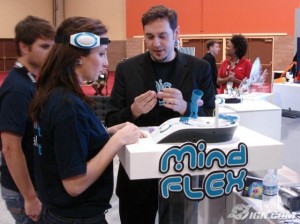
Mind Flex made by Mattel will let you move a ball around an obstacle course using only your own mind.
around a changable obstacle course using your brain waves. I absolutely love this invention just because I am the biggest Star Wars fan in the world, and anything that could offer me a real life simulation of the Force would be the greatest anthing made by any mon in the history of the world. Even though there were much more sophisticated and life-convienencing
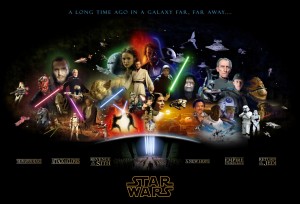
GREATEST SAGA OF ALL TIME
products such as Nokia’s Morph, a cellphone made up of nanoparticles, the idea of moving objects around with using only my mind like the noble Jedi Knights is much too cool to handle. AND the best part is, Mind Flex comes out fall this year. So getting it…
John and Carlin also showed us a great video that explained a theory they were teaching us- double slit electrons. It was a cartoonanimation that slowly and clearly explained a concept I went an entire ear of chemistry of not understanding. Finally, I get it. It is just noglosticto think of all the weeks I spent confused in my chem class thinking, “Electrons… slit… waves… whaaa??”. I’m so glad that a year later, I get this theory at an art | science nanotechnology summer program.
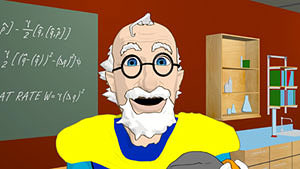
Dr. Quantum taught me everything i know about electrons!
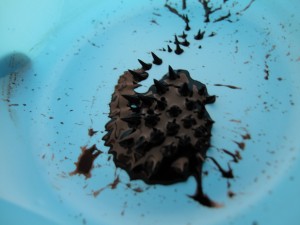 Today was all about the hands on portion of nanoscience. We had the opportunity to work with ferrofluids (a liquid with magnetic properties) and photo lithography (the process by which wires are translated onto circuit boards). I know I grasp concepts better with hands on experiments. Textbooks are useful but hands on labs work the best for me personally. The ferrofluids were amazing with their unique and unconventional appearance. They are liquids with magnetic properties that display magnetic fields that are generated as a result of magnetic stimuli. A few weeks before attending this course I recall reading online about rare earth magnets and what constitutes them. In addition to the rare earth magnets, the article also explored ferrofluids.
Today was all about the hands on portion of nanoscience. We had the opportunity to work with ferrofluids (a liquid with magnetic properties) and photo lithography (the process by which wires are translated onto circuit boards). I know I grasp concepts better with hands on experiments. Textbooks are useful but hands on labs work the best for me personally. The ferrofluids were amazing with their unique and unconventional appearance. They are liquids with magnetic properties that display magnetic fields that are generated as a result of magnetic stimuli. A few weeks before attending this course I recall reading online about rare earth magnets and what constitutes them. In addition to the rare earth magnets, the article also explored ferrofluids.  I was intrigued with the material (having a long time interest with magnets ) and searched the internet for online demonstrations of the material. Today, having tangibly handled and synthesized ferrofluid myself, I now have a better understanding of the properties that govern its behavior and characteristics. Never did it cross my mind that I would have the opportunity to work with this material myself. The photolithography lab was different from anything else we have ever done. The lab mimics what chip manufacturers do in order to produce silicon chips and microprocessors. I have read how the smaller we make our products (like microprocessors) the faster it will work. Richard A.L. Jones (Softmachines) explained this principle and made the analogy between human arms and hummingbirds’ wings. I suppose this is the same principle that governs the computer world in terms of both speed and physical size.
I was intrigued with the material (having a long time interest with magnets ) and searched the internet for online demonstrations of the material. Today, having tangibly handled and synthesized ferrofluid myself, I now have a better understanding of the properties that govern its behavior and characteristics. Never did it cross my mind that I would have the opportunity to work with this material myself. The photolithography lab was different from anything else we have ever done. The lab mimics what chip manufacturers do in order to produce silicon chips and microprocessors. I have read how the smaller we make our products (like microprocessors) the faster it will work. Richard A.L. Jones (Softmachines) explained this principle and made the analogy between human arms and hummingbirds’ wings. I suppose this is the same principle that governs the computer world in terms of both speed and physical size.
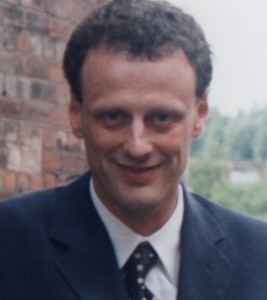
Richard A.L. Jones
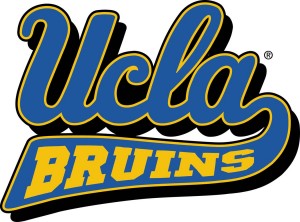
This two week summer program truly changed my life in just that short amount of time. It not only taught me hundreds of things I had no clue about, but also prepared me for a much more diverse, independent environment on a college campus. Every morning, waking up early for lectures were a pain. However, I appreciate all those people who gave their time and energy to try to teach us what they know. I actually learned much more than I expected to. I loved having the privellege to visit labs and to learn about all the new, futuristic ideas sc ientists today are coming up with and persuing. It was also an honor to be spoken to by the dean of medicine here at the hospital of UCLA and Victoria Vesna. I’m very grateful to have been under the guidance of such brilliant people. Other than my education here at UCLA, I very much enjoyed the social life and my awesome counselors. They were truly amazing, really fun, and were always there for me, whether it was for laughs or help. I’ll miss them: Dougal, Brent, Angelica, and even Varun. The kids in the program were also the best I could have asked for. I regret sleeping so late at nights and dozing off during lectures; I really need to work on my sleeping habits. I’m happy to announce, however, that my procrastination habits have improved and that I handled my work load pretty wisely. This experience most definitely changed me for the better and I will be able to apply what I learned throughout my life, whether it be in school or in the real world.
ientists today are coming up with and persuing. It was also an honor to be spoken to by the dean of medicine here at the hospital of UCLA and Victoria Vesna. I’m very grateful to have been under the guidance of such brilliant people. Other than my education here at UCLA, I very much enjoyed the social life and my awesome counselors. They were truly amazing, really fun, and were always there for me, whether it was for laughs or help. I’ll miss them: Dougal, Brent, Angelica, and even Varun. The kids in the program were also the best I could have asked for. I regret sleeping so late at nights and dozing off during lectures; I really need to work on my sleeping habits. I’m happy to announce, however, that my procrastination habits have improved and that I handled my work load pretty wisely. This experience most definitely changed me for the better and I will be able to apply what I learned throughout my life, whether it be in school or in the real world.
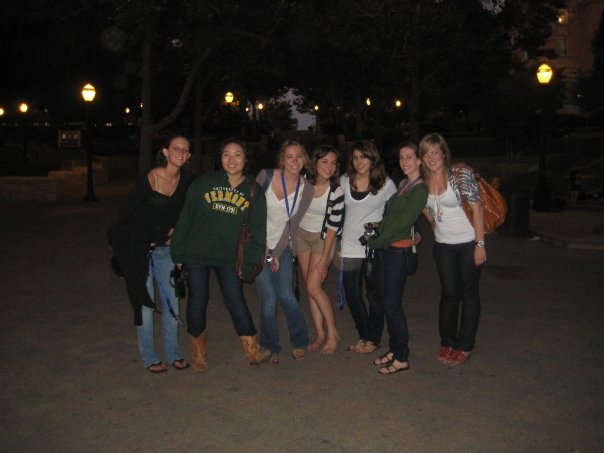
http://www.ucla.edu/
http://www.cnsi.ucla.edu/
http://en.wikipedia.org/wiki/Nanotechnology
http://www.facebook.com/home.php#/group.php?gid=64297359003&ref=ts
http://vv.arts.ucla.edu/
 The plasma lab was a place of awe. Filled with loud machines, steel, and concrete, the facility was the real McCoy. Capable of reaching temperatures exceeding 200 million degrees centigrade, the sun is dwarfed by this machine. The facility is certainly an investment consuming nearly enough energy to completely power Westwood. But what are the advantages to having a plasma lab? The machine allows scientists to have complete access to conditions that occur nowhere but in space. Scientists thus have the opportunity to carry out experiments/tests that would otherwise be necessary to carry out outside of Earth’s atmosphere. The connection between art and science is no new concept. As with the rare books collection, this aspect was evident from as far back as the sixteenth century. The collection was definitely the highlight of the day. The books really gave me perspective on what it means to make the connection between science and art. Having background knowledge about both Darwin and Copernicus and learning about their scientific findings, I have always been fixated on only the science and social responses behind their findings.
The plasma lab was a place of awe. Filled with loud machines, steel, and concrete, the facility was the real McCoy. Capable of reaching temperatures exceeding 200 million degrees centigrade, the sun is dwarfed by this machine. The facility is certainly an investment consuming nearly enough energy to completely power Westwood. But what are the advantages to having a plasma lab? The machine allows scientists to have complete access to conditions that occur nowhere but in space. Scientists thus have the opportunity to carry out experiments/tests that would otherwise be necessary to carry out outside of Earth’s atmosphere. The connection between art and science is no new concept. As with the rare books collection, this aspect was evident from as far back as the sixteenth century. The collection was definitely the highlight of the day. The books really gave me perspective on what it means to make the connection between science and art. Having background knowledge about both Darwin and Copernicus and learning about their scientific findings, I have always been fixated on only the science and social responses behind their findings.  However, physically holding their earliest publishings made me realize that in order to fully convey their radical ideas they had to present them through illustrations and literature. History’s scientists have for centuries relied on sketching their findings. Darwin was able to illustrate evolution through his sketches in The Origin of Species. Others were able to map out the human anatomy through their publishings.
However, physically holding their earliest publishings made me realize that in order to fully convey their radical ideas they had to present them through illustrations and literature. History’s scientists have for centuries relied on sketching their findings. Darwin was able to illustrate evolution through his sketches in The Origin of Species. Others were able to map out the human anatomy through their publishings. 
It’s always easy for one to imagine what an experience may be like, but until it’s actually been experienced, you never really know exactly how it’ll all feel or turn out. This is the perfect way to describe this entire Sci Art program. Upon applying and being accepted into the camp, I really didn’t know what to expect from the program itself or what the experience as a whole would be like. However, I’m quite glad to say that it lived up to all of my expectations and even surpassed a few. Through this program, I’ve met many amazing people, learned incredibly interesting things, and been exposed to a great variety of new experiences.
In a way, this is exactly what the future of nanotechnology may hold. Although it’s a scientific venture whose possibilities range far and wide and can be imagined by many, no one knows exactly what to expect from it. While some tout the unimaginable benefits of a nano-powered world, others warn of a doomed world overtaken by these microscopic “beings”. However, while the future of nanotechnology remains a bit fuzzy at the moment, it is undeniable that this emerging technology offers an endless variety of “what-ifs” and possibilities. Only until the world gets its first taste of true nanotechnology can it realize exactly what it has to offer.
However, I feel confident moving forward into the future as someone who knows at least a little bit more about nanotechnology and its capabilities and drawbacks. And most important of all, I realize that without the creativity one finds innately in art, the scientific world can never advance to such a point.
SOME MEMORIES….
LINKS:
2) Dangers of molecular manufacturing:
3) Nanotechnology art gallery:
4) Nanotechnology in medicine:
5) Environmental impact of nanotechnology:
Today we presented our mid-term presentations which were an interesting way to experience the different ways of thinking of science and art. Each group thought of very different and unique idea that proved to have artistic importance as well as scientific. My group had trouble thinking up a topic in the previous days but finally came up with a ‘cure’ for Sickle-Cell anemia. We discussed how because the cells were shaped in a type of rigid and flat shape, all we had to do was either create ‘more red blood cells and lyse the sickle cells or replace bone marrow to recreate normal red blood cells. Unfortunately, my whole group [being more scientific than artistic] had forgotten anything about the artistic side of this project. When we thought more about our idea, it seemed to fit the “Imagine the Impossible” theme… However, that afternoon, when everyone presented their projects and we saw how creative and interesting each one was, we knew we had to change our idea. When we presented, we were critiqued a lot and I realized that we needed an idea that was artistically unique with a science background. I was the one who described our nanobots to act as a certain enzyme to enhance the lysing of the sickle-cells [very boring indeed].


That night after getting back from the dorm, we all met and furiously brainstormed for a new idea. We came up with a variety of topics that, unfortunately, did not work out or were already formed in some way in the world.
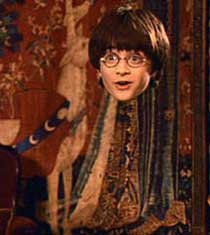
Links:
http://www.nhlbi.nih.gov/health/dci/Diseases/Sca/SCA_WhatIs.html
http://en.wikipedia.org/wiki/Sickle-cell_disease
http://www.sicklecelldisease.org/about_scd/index.phtml
Home
http://www.labtestsonline.org/understanding/conditions/sickle.html
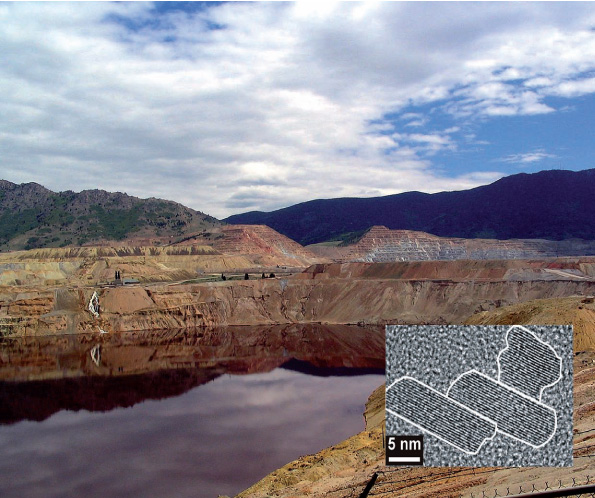 We started off the day with an opening lecture that continued what John and Carlin touched upon yesterday. Today’s intrduction lecture discussed the more controversial side of scrience which is its application and restrictions. Basically, when scientists make any sort of discovery, they must debate all the benefits versus costs of that discovery. For example, Dan stated a very interesting point about these obsure scientific innovations: the things that scientists do or make is not what is important, but the fact that all they are doing is discovering laws in nature that already existed, and the bottom line is that you cnnot control what people discover. He goes on further by noting the fact that today, nanotechnology follows this pattern of cost and benefits, but the benefits so much outweigh the costs. The lecture in its entirety reminded me of my entire year in AP Enviromnetal Science. All year long, every human action was discovered and dissected in a cost versus benefit point of view. Everything from poaching to aquaculture to nuclear power would be up for discussion, and we would spend entire classes stating opinions on whether these processes would help the environment or further degrade it. Nanotechnology was not forgotten. It was actually one of the more heated topics. I always opposed its progression without regulation because of its nano-size, which could be released into the environment and accidentally destroy it from the inside out. Nanoparticles also could seep into pores and would be extremely difficult to excrete from one’s system. I am still partially skeptical about nanotechnology, even during the program, but now I believe that it sould be a field that should be pursued and grow, as long as it’s use is limiteduntil we learn ore about it.For instance, nanosilver socks should be taken off the market not only because it is a completely unnecessary product, but also because it could be potentially threatenting to an ecosystem and its inhabitants.
We started off the day with an opening lecture that continued what John and Carlin touched upon yesterday. Today’s intrduction lecture discussed the more controversial side of scrience which is its application and restrictions. Basically, when scientists make any sort of discovery, they must debate all the benefits versus costs of that discovery. For example, Dan stated a very interesting point about these obsure scientific innovations: the things that scientists do or make is not what is important, but the fact that all they are doing is discovering laws in nature that already existed, and the bottom line is that you cnnot control what people discover. He goes on further by noting the fact that today, nanotechnology follows this pattern of cost and benefits, but the benefits so much outweigh the costs. The lecture in its entirety reminded me of my entire year in AP Enviromnetal Science. All year long, every human action was discovered and dissected in a cost versus benefit point of view. Everything from poaching to aquaculture to nuclear power would be up for discussion, and we would spend entire classes stating opinions on whether these processes would help the environment or further degrade it. Nanotechnology was not forgotten. It was actually one of the more heated topics. I always opposed its progression without regulation because of its nano-size, which could be released into the environment and accidentally destroy it from the inside out. Nanoparticles also could seep into pores and would be extremely difficult to excrete from one’s system. I am still partially skeptical about nanotechnology, even during the program, but now I believe that it sould be a field that should be pursued and grow, as long as it’s use is limiteduntil we learn ore about it.For instance, nanosilver socks should be taken off the market not only because it is a completely unnecessary product, but also because it could be potentially threatenting to an ecosystem and its inhabitants.
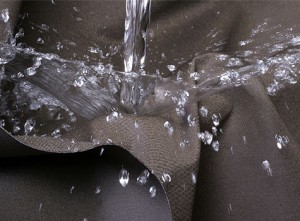
The science of manipulating atoms and molecules to physically alter or modify the cloth or engineer new fabrics
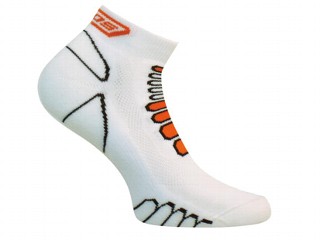
Nano silver socks
http://www.nsf.gov/pubs/2007/nsf07590/nsf07590.htm
http://www.cnsi.ucla.edu/NanoRegulatoryPolicy/pdfs/kysar.pdf
http://www.mapcruzin.com/news/rtk022602a.htm
http://www.azonano.com/Details.asp?ArticleID=1865
http://www.epa.gov/ncer/events/news/2004/10_26_04_calendar.html
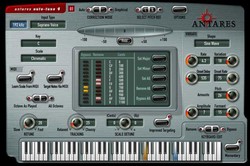
An auto-tuning machine.
A few days ago, a man specialized in electronic music and sound named Tyler Adams visited and gave out group an interesting lecture on his profession. The most interesting part of his lecture, in my opinion, was the subject of auto-tuning music. Auto-tune is a proprietary audio processor created by Antares Audio Technologies that uses a phase vocoder to correct pitch in vocal and instrumental performances. It is used to disguise inaccuracies and mistakes, and has allowed many artists to produce more precisely tuned recordings. In addition to being used to subtly change pitch, with some settings it can be used as an effect to deliberately distort the human voice. Auto-Tune has become standard equipment in professional recording studios. Auto-Tune was initially created by Andy Hildebrand, an engineer working for Exxon. Hildebrand developed methods for interpreting seismic data, and subsequently realized that the technology could be used to detect, analyze, and modify pitch.
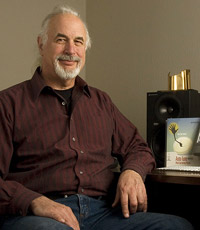
Andy Hildebrand.
When a singer’s voice is filtered through Auto-Tune, the pitch is tweaked depending on what tone is pre-programmed into the software. The result the robotic-sounding effect familiar from Cher’s 1990s hit “Believe” and later pushed into more common usage by T-Pain. I personaly love all T-pain songs and Kanye West’s new soundtrack. They are both infamous users of the popular software. Auto-tuning can also be used for comedic effect in certain videos. I believe it is a wonderful and creative software that will revolutionize music and create a whole new trend.
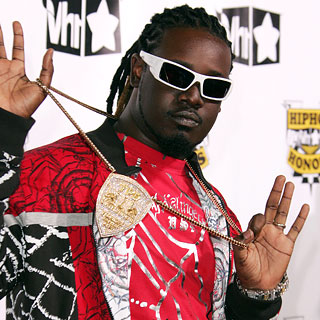
http://en.wikipedia.org/wiki/Auto-Tune
http://www.antarestech.com/
http://www.antarestech.com/products/auto-tune-evo.shtml
http://www.mtv.com/news/articles/1614919/20090629/t_pain.jhtml
http://www.time.com/time/magazine/article/0,9171,1877372,00.html
Today is the first day we’re something hands on!!!!!! Hooray! After another extremely stimulating lecture which once again cut down the barriers of art in science we began working in our groups. Today was especially special because our group decided, after much deliberation, to change our final project idea. We changed our idea into one that involved warping the perception of ones own reality which, I believe, would be an extremely beneficial invention for all of mankind.
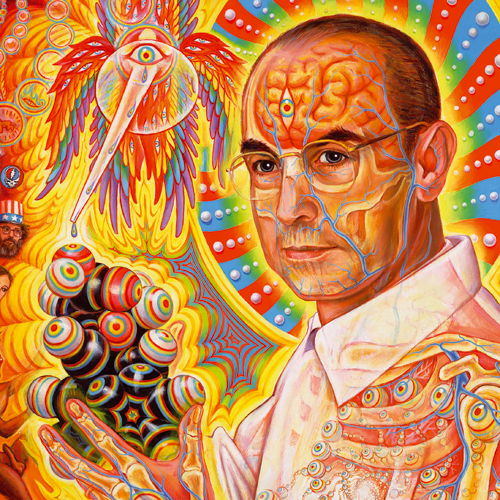
After discovering a new ground breaking idea for our project we went inside the CNSI building to start our experiments. Muahahahahaha!!!!! We came inside the building and learned that we would be making a magnetic fluid and our own computer chips. The experiment began with mixing an acid with a copper solution while stirring slowly. We proceeded to do so as per the directions rules. The solution became black eventually and as we followed the directions more and more apparent attributes of the fluid we were aiming for became apparent. Once we completed the instructions and placed a magnet under the tray the results were amazing!!!
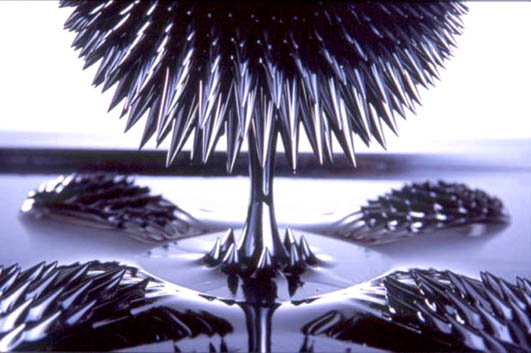
The fluid spiked up and made magnificent shapes that shocked and amazed us all. After this amazing experiment we moved onto making computer chips. We all got a basic computer chip and were told to put a design on it. We ll put our various designs on a transparency which was then placed under a UV light which baked the symbol into the computer chip. After taking our computer chips out of this de facto oven our various symbols were engraved onto our computer chips.

off to Harry Potter.
http://www.wisegeek.com/what-is-a-computer-chip.htm
http://chemlinks.beloit.edu/Chip/index.html
www.youtube.com/watch?v=sBsh7RbzNNI
www.youtube.com/watch?v=me5Zzm2TXh4
http://www.unitednuclear.com/magnets.htm



 Today was all about the hands on portion of nanoscience.
Today was all about the hands on portion of nanoscience. I was intrigued with the material (having a long time interest with magnets ) and searched the internet for online demonstrations of the material.
I was intrigued with the material (having a long time interest with magnets ) and searched the internet for online demonstrations of the material.

 ientists today are coming up with and persuing. It was also an honor to be spoken to by the dean of medicine here at the hospital of UCLA and Victoria Vesna. I’m very grateful to have been under the guidance of such brilliant people. Other than my education here at UCLA, I very much enjoyed the social life and my awesome counselors. They were truly amazing, really fun, and were always there for me, whether it was for laughs or help. I’ll miss them: Dougal, Brent, Angelica, and even Varun. The kids in the program were also the best I could have asked for. I regret sleeping so late at nights and dozing off during lectures; I really need to work on my sleeping habits. I’m happy to announce, however, that my procrastination habits have improved and that I handled my work load pretty wisely. This experience most definitely changed me for the better and I will be able to apply what I learned throughout my life, whether it be in school or in the real world.
ientists today are coming up with and persuing. It was also an honor to be spoken to by the dean of medicine here at the hospital of UCLA and Victoria Vesna. I’m very grateful to have been under the guidance of such brilliant people. Other than my education here at UCLA, I very much enjoyed the social life and my awesome counselors. They were truly amazing, really fun, and were always there for me, whether it was for laughs or help. I’ll miss them: Dougal, Brent, Angelica, and even Varun. The kids in the program were also the best I could have asked for. I regret sleeping so late at nights and dozing off during lectures; I really need to work on my sleeping habits. I’m happy to announce, however, that my procrastination habits have improved and that I handled my work load pretty wisely. This experience most definitely changed me for the better and I will be able to apply what I learned throughout my life, whether it be in school or in the real world.
 The
The  However, physically holding their earliest publishings made me realize that in order to fully convey their radical ideas they had to present them through illustrations and literature.
However, physically holding their earliest publishings made me realize that in order to fully convey their radical ideas they had to present them through illustrations and literature.

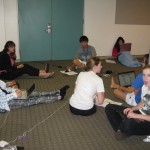
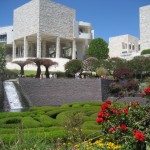



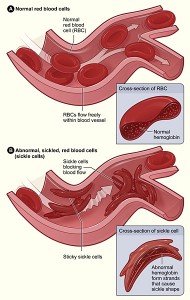
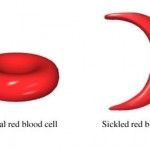 and alleviate
and alleviate 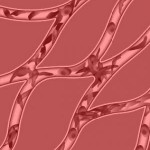
 We started off the d
We started off the d






